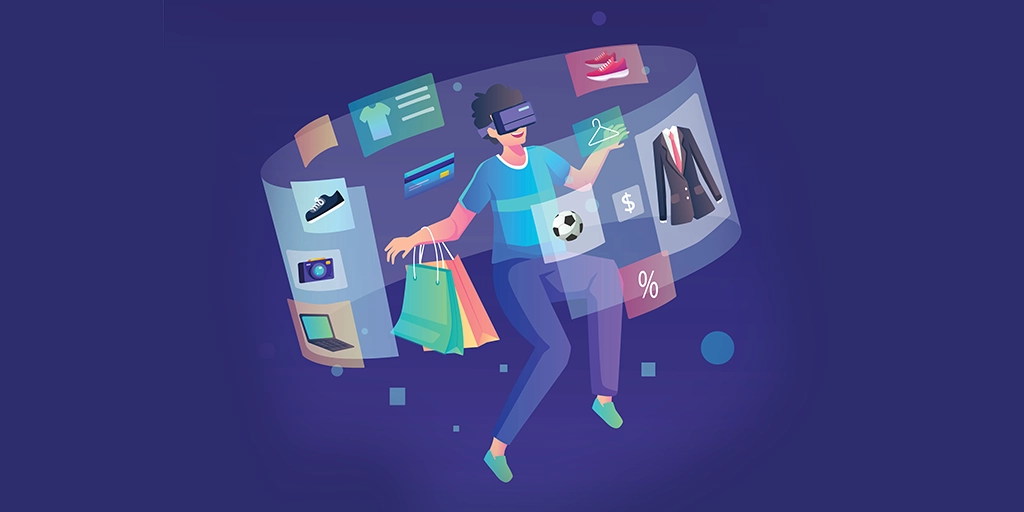The Technology Behind Headless Commerce Simplified
Imagine planning a road trip. You have a shiny new GPS ready to guide you, but instead of giving you the most efficient route to your destination, it leads you down every side street, back alley, and dirt road. Not the most efficient journey, is it?
This is similar to how traditional eCommerce platforms often work. They have everything you need for an online store. Still, their interconnected, entangled systems can make every minor adjustment a significant detour, slowing down your journey to provide the optimal customer experience.
On the other hand, Headless Commerce is like having a GPS that takes you straight down the freeway, allowing you to bypass unnecessary complications and deliver a smooth, streamlined shopping experience to your customers. It separates the 'head' (the front-end or customer-facing side) from the 'body' (the back-end, where all the data management happens), allowing each to operate independently. This approach gives businesses more flexibility and control over their eCommerce platform.
But why is this decoupling so revolutionary? To truly appreciate the advantages of Headless Commerce, we need to delve into the technology that powers it.
In this article, we'll uncover the technical aspects behind Headless Commerce, but don't worry - we've left the jargon at the door. Think of this as your Headless Commerce tech guide for non-techies. Let's jump in!
Decoupling the Front and Back Ends
Consider a classic diner where the kitchen and the dining area are managed as one unit. The chef not only cooks but also serves the dishes, manages orders and does everything else. It's like a one-person show where everything happens sequentially. But this could lead to delays, especially during peak hours when the diner buzzes with customers.
Now, imagine another scenario where the kitchen (back end) and the dining area (front end) are handled by different teams. The chef focuses solely on cooking delicious meals while the waitstaff takes orders, serves the food, and manages customers. Everything happens simultaneously, providing a smooth dining experience, even during the busiest times.
This is similar to the concept of decoupling in Headless Commerce. In a traditional eCommerce setup, the back end (where data is managed, such as inventory, pricing, and customer information) and the front end (the website or app interface that customers interact with) are tightly interlinked. Change something in the back end, affecting the front end, much like our one-person diner.
Headless Commerce separates these two ends. The back end still handles all the data but now communicates with the front end—a website, mobile app, or even a smartwatch—through APIs (Application Programming Interfaces). This allows you to make changes or updates without disrupting the other. Like our efficient diner with separate kitchen staff and waitstaff, operations become smoother and more efficient.
By decoupling the front and back ends, businesses gain the flexibility to deliver a consistent and high-quality customer experience across all platforms and the freedom to innovate without being held back by back-end constraints.
The Role of APIs in Headless Commerce
Think back to the efficient diner we mentioned earlier, where the kitchen staff and waitstaff function separately but work together to provide a seamless experience for customers. How do they manage this? They communicate. The waitstaff conveys the customers' orders to the kitchen and brings the prepared meals back to the customers.
In Headless Commerce, APIs (Application Programming Interfaces) play a similar role. They serve as the 'waitstaff' between the back end (kitchen) and the front end (dining area). An API takes a request from the front-end, like a customer placing an order on a website, sends this request to the back-end to process the order, and then delivers the response, such as an order confirmation, back to the front-end.
In a traditional eCommerce setup, the front-end and back-end are closely tied together, limiting how they communicate. But in a headless design, the API allows the front end to communicate with the back end freely and flexibly, regardless of the platform or device being used.
This is akin to how a skilled waiter can effectively communicate complex customer orders to the kitchen and deliver the proper meals back to the customers. The API ensures that the correct data is sent to the right place, at the right time, in a format that each side understands.
By enabling efficient and flexible communication between the front-end and back-end, APIs play a crucial role in delivering the benefits of Headless Commerce.
Yet, not all APIs are created equal, much like not all waitstaff are equally efficient. The performance of an API can significantly impact the speed, efficiency, and overall user experience of your eCommerce platform. Some APIs are faster, allowing data to move quickly between the front and back ends. Others have more sophisticated designs, enabling them to handle complex requests more effectively.
One standout in today's market is the GraphQL API. Think of GraphQL as a superstar waiter who not only delivers orders to the kitchen but also ensures that each dish is prepared exactly as requested, right down to the smallest detail. GraphQL is highly efficient and can load data much faster than traditional APIs. It allows front-end developers to request specific data they need rather than receiving a fixed set of bloated data. This means less unnecessary data is transferred, resulting in quicker load times and a more seamless user experience.
Moreover, GraphQL is designed for flexibility and ease of use, making it an increasingly popular choice in Headless Commerce. It's like having a top-notch waiter who can effectively communicate with the kitchen and customers, ensuring that the diner operates smoothly, even during the busiest times.
In Headless Commerce, having an API designed for GraphQL can provide significant performance advantages, making it a key ingredient in delivering a fast, flexible, and efficient customer experience.
Services and Headless Commerce
Consider a bustling city. It's comprised of various districts, each functioning independently but contributing to the overall functioning of the city. The residents of each community know their area inside out and can handle local issues efficiently. Together, all these districts make the city a dynamic, efficient, and exciting place to live.
Services in the realm of Headless Commerce are much like these independent districts. In a traditional eCommerce setup, you might have a monolithic architecture - a single, extensive system that handles everything from inventory and pricing to customer management and website display. It's like having a city run by one enormous governing body. While this can work, it often results in slower responses and less flexibility.
Services, however, break down this large system into smaller, independent functions, each focusing on a specific area, just like our independent districts. You might have one service for handling inventory, another for managing customer data, and another for processing orders. These services communicate and coordinate through APIs, functioning together as a cohesive system.
This services-based architecture provides several benefits. It allows for greater flexibility, as each service can be developed, updated, and scaled independently. If you need to add a new feature or edit an existing one, you can do so without disrupting the entire system. It's like making improvements in one district without causing a city-wide disruption.
Moreover, services enhance performance. By distributing tasks among different services, your eCommerce platform can handle larger traffic volumes, and process requests more efficiently. It's akin to spreading out the population across other districts to avoid overburdening any one area of the city.
By adopting a services architecture in Headless Commerce, businesses can achieve a more flexible, scalable, and efficient eCommerce system ready to meet the evolving demands of today's digital landscape.
Front-End Technologies for Headless Commerce
Imagine walking into a well-designed store. The layout is intuitive, the displays are attractive, and it's easy to find what you're looking for. This enhances your shopping experience, making you more likely to stay longer and make a purchase. This is similar to the experience modern JavaScript frameworks like React and Vue.js can offer.
Contrast this with a more traditional store layout - aisles are set, displays are static, and changing anything requires significant time and effort. This is like the traditional way of building websites. Traditionally, websites were built with a mix of HTML, CSS, and jQuery. They were largely static, requiring a page reload for every new piece of content. Making updates or changes was a cumbersome process, much like rearranging a traditional store.
Modern JavaScript frameworks, on the other hand, enable the creation of Single Page Applications (SPAs). SPAs work like a well-oiled conveyor belt, smoothly bringing in new content as needed without having to refresh the entire page. This offers a seamless user experience, akin to moving effortlessly through a well-designed store.
React is like a well-organized, flexible store layout. Created by Facebook, React allows developers to build dynamic and responsive user interfaces quickly. It encourages the creation of reusable components, enabling developers to maintain consistency and speed up development time. It's like having a modular store layout that you can quickly adapt based on changing trends or customer feedback.
Vue.js, on the other hand, is like a sleek, modern store design. Vue.js is known for its simplicity and flexibility, making it easy for developers to build complex user interfaces. Despite its simplicity, Vue.js is incredibly powerful and capable of powering high-performance applications. It's akin to a store design that is aesthetically pleasing and efficient, encouraging customers to stay and explore.
By decoupling the front end from the back end in a headless commerce setup, businesses can choose the best front-end technology that suits their needs and preferences. Whether it's the flexible and efficient React or the simple yet powerful Vue.js, the right front-end technology can enhance your customer's shopping experience and ultimately boost your bottom line.
Progressive Web Applications (PWAs) and Instant Page-to-Page Load Speeds
Watching a professional pit crew during a car race can be an awe-inspiring experience. In mere seconds, they refuel the car, change the tires, make any necessary repairs, and send the car back onto the track. This seamless and incredibly efficient process is what Progressive Web Applications (PWAs) bring to your website experience.
Progressive Web Applications are a type of web application that take full advantage of modern web capabilities to deliver an app-like experience. They function on any platform that uses a standards-compliant browser and provide a user experience that feels like a native application on both mobile and desktop devices.
One of the defining features of PWAs is their ability to provide instant page-to-page transitions. Just as a well-coordinated pit crew can complete their tasks smoothly and rapidly, PWAs eliminate waiting times between different website pages. This is possible through a PWA technique called a Single Page Application (SPA).
In headless commerce, PWAs play a significant role in improving the user experience. A PWA-powered storefront is fast, reliable, and engaging. With instant page-to-page load speeds, users can browse products, read descriptions, and make purchases without frustrating delays. It's like experiencing the efficiency and speed of a professional pit crew while shopping online.
In a world where customer expectations are high and patience for slow websites is low, PWAs are a game-changer for online businesses. By implementing a PWA in a headless commerce setup, merchants can provide a superior user experience that can lead to higher engagement and conversions.
The Role of GraphQL
Imagine dining at a restaurant where you can order a custom meal with only the desired ingredients. No need to pick out unwanted tomatoes or onions; the chef prepares the dish precisely to your liking. In the world of data query and manipulation, GraphQL performs much like this attentive chef.
GraphQL, short for Graph Query Language, is a language for APIs and a runtime for executing those queries with your existing data. Developed by Facebook in 2012 and open-sourced since 2015, GraphQL was designed to address the limitations of traditional RESTful APIs.
When traditional APIs require loading from multiple URLs, GraphQL APIs get all the data your app needs in a single request. Apps using GraphQL are quick even on slow mobile network connections.
Just as you don't have to deal with unwanted ingredients in your meal, GraphQL allows the client side of your website to specify precisely what data it needs from the server. This eliminates unnecessary data transfers, improving the speed and performance of your site.
One of the unique advantages of GraphQL is its ability to unify data from various services in your technology stack behind a single API. Rather than having to manage multiple REST APIs, each interacting with a different service, GraphQL ties them all together. This consolidation results in a more streamlined and manageable system.
In headless commerce, all the different services - inventory management, product catalog, content, customer data, or pricing information - can be accessed and managed through a single GraphQL API. It's like having a personal chef who can expertly combine ingredients from various sources into a single, perfectly crafted dish.
GraphQL is a fundamental part of the technology stack in a headless commerce setup, allowing for high performance, greater efficiency, and a unified interface across multiple services.
Conclusion
In this new era of eCommerce, businesses are increasingly embracing the headless commerce model to deliver superior customer experiences. With its potential to provide more flexibility, improved performance, and future-proof technology, headless commerce transforms how businesses operate online.
Think of headless commerce as a modular kitchen in a restaurant. It empowers you to choose your preferred technologies, customize your workflows, and ensure that you're always serving the best experiences to your customers, regardless of the device they use to interact with your business.
But as with any complex system, understanding the technology behind it is essential. We've unpacked the various components of headless commerce in this post - from the decoupling of front-end and back-end systems to the role of APIs, the impact of different front-end technologies, the benefits of PWAs and GraphQL, and the importance of security.
Just like in the world of gastronomy, where knowing your ingredients and mastering your techniques leads to a better dining experience, understanding the technology behind headless commerce will help you better cater to your customer's needs and preferences in the online marketplace.
Sign up for our newsletter to stay updated on the latest trends, strategies, and insights in the headless commerce world. You'll get access to exclusive content and expert advice to help you navigate the rapidly evolving eCommerce landscape.
Stay tuned for future posts where we'll delve deeper into each aspect of headless commerce, equipping you with the knowledge and insights to harness this transformative model effectively for your eCommerce business.
Share this
You May Also Like
These Related Stories

6 Crucial Factors to Consider When Evaluating Headless Commerce

4 Benefits of Headless Commerce


